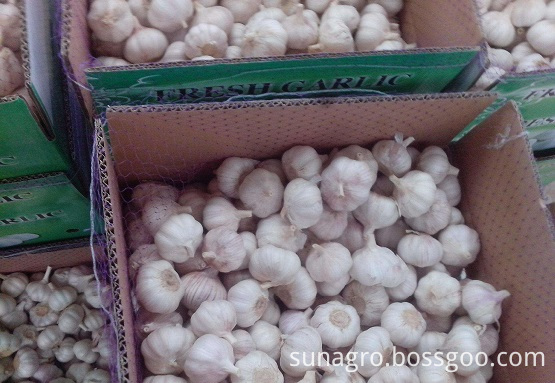First, fertilization of fruit trees should follow a long-term strategy
Fertilization of fruit trees is not a short-term behavior. Formulating a long-term orchard fertilization system is of great significance for the high and stable production of orchards. Because the fruit tree production depends not only on the nutritional status of the tree in the year, but also closely related to the nutritional status of the tree in the previous year. Therefore, fertilization measures must ensure high yields in the current year, but also make it conducive to flower bud differentiation, actively stocking nutrients, lay a good foundation for high yields for successive years.
Second, the impact of major mineral elements on fruit tree growth and results
1. Nitrogen. The lack of nitrogen can cause vegetative growth to be limited, manifesting as pale leaf color, light green or yellow-green, and uniform in color. Yellowing begins with the lower old leaf and gradually expands to the upper leaf. The fruit is hard and the sugar content is relatively increased, but the yield is low and the quality of the product is reduced. Excessive nitrogen causes fruit peels to thicken, fruit juices to decrease, growth of new shoots to decrease, yield to decrease, and the number of flower bud formations to decline.
2. Phosphorus. Phosphorus deficiency causes tree growth retardation, small leaves, dark green color and poor fruit quality. Appropriate supplemental P fertilizer can promote flower bud differentiation and fruit development. Increase the number of flowers, increase production and quality, and enhance cold resistance. Phosphorus excess mainly affects the absorption of elements such as iron, zinc, and magnesium, resulting in deficiency of trace elements.
3. Potassium. The proper amount of potassium can promote cell division, increase fruit, promote sugar transformation, increase fruit yield and quality, and increase tree stress resistance. Such as lack of potassium, small fruit, poor coloring, falling fruit before maturity, reducing yield and quality. At the same time, it can also cause the growth of branches is not full.
Third, fruit trees reasonable fertilization method
(1) Fertilization time and dosage: Fruit trees are mainly fertilized with basal fertilizer, supplemented by topdressing, combined with foliar spray fertilizer, and fruit trees are required to fertilize large quantities of elements and trace elements.
1. Base fertilizer. Basal fertilizer is generally suitable for autumn. The basal fertilizer consists mainly of organic manure such as ring fertilizer and manure fertilizer. It is blended with part of nitrogen, phosphorus, and quick-acting fertilizers. Fertilizers are subject to stacking to improve fertilizer efficiency. However, it should be noted that manure and compost should not be mixed with nitrophosphate fertilizer; fecal manure should not be mixed with ammonium bicarbonate, ammonia, superphosphate, and other fertilizers; plant ash should not be mixed with ammonium bicarbonate, urea, superphosphate, and other fertilizers. Orchard single plant 100 kg of common manure, can be sprayed in the late growth period 0.4% ~ 0.5% potassium dihydrogen phosphate 2 ~ 3 times, as a supplement to the underground basal fertilizer.
2. Top dressing. During the flowering period, topdressing and top dressing, topdressing, etc., the topdressing fertilizer during the flowering period is mainly available nitrogen fertilizer, and appropriate amount of phosphate fertilizer. The top-dressing fertilizer is mainly composed of three elements including nitrogen, phosphorus and potassium, and nitrogen fertilizer must not be applied. For weakly growing trees, nitrogen fertilizers are applied several times before and during the early stage of budding and new shoots, combined with irrigation. For trees with less prosperous growth, long-term forced fertilization is stopped at new shoots, and long-term shoots are mainly planted during autumn. More topdressing phosphorus, potash fertilizer. For sapling dressing, not too much.
3. Leaf spray fertilizer. During the growing season, the pesticide is sprayed on the leaves and the fertilizer is sprayed on the leaves to strictly control the concentration so as to prevent the occurrence of fertilizer damage. The suitable concentrations are: urea 0.3% to 0.5%, zinc sulfate 0.3%, ferrous sulfate 0.3%, calcium superphosphate leaching solution 2.0%, potassium dihydrogen phosphate 0.3% to 0.5%.
(B) fertilization method: fertilization first according to the root growth, distribution, absorption performance, the fertilizer applied at the most appropriate location, fruit root absorption roots are more concentrated in the projection of the tree crown periphery, but the horizontal root distribution is wider, often more than the crown 1 ~ 2 times more. Therefore, when the roots of fruit trees in mature gardens and dense planting gardens are full of gardens, it is advisable to use gutters, wells, and whole gardens, but for saplings, round-groove or radial gutters are often used. The fertilization concentration depends on the type of fertilizer, root distribution, and phenology period of the fruit tree. The application is deeper (30 to 50 cm) in autumn and lighter (20 to 30 cm) in growing season. Phosphorus fertilizer is easily fixed and moves slowly in soil. Should deepen.
Quality of White Garlic in our company:
Root cut Garlic clean clean, loose skin peeling garlic, no cooking garlic, no black moldy garlic, no broken garlic, skin no lobes, no internal sprouting, no insects or fungi.
Garlic belongs to liliaceae allium I and ii plants, which are composed of roots, stems, leaves, moss, bulbs, flowers and other parts. The roots are string-like root system, and the root group is mainly distributed in the soil layer of 0 ~ 30 cm. The stems of garlic degrade into flat short shriveled stems, called stem disk, and form bulbs with leaf sheath and garlic clove, namely the head of garlic.We can pack 10KG and 20KG boxes as required by the customer. If you have any need, please let us know.

Garlic In Cartons,Garlic Cartons Packaging,Fresh Garlic In Cartons,White Garlic In Cartons
Jining Sunagro Trade Co., Ltd. , http://www.sunagro-food.com